Are you looking for inspiration from the best advertising campaigns in marketing history when planning your next ad campaign?
Creating ad campaigns can be challenging – figuring out what will resonate with your audience is not so simple.
Get motivated with our list of the best advertising campaigns ever! We can learn a lot from the success stories of big players in any industry – they’ve been there, and done it to the MAX.
That’s why we’ve created this list of the best advertising campaigns. We’ve analyzed each campaign to give you insight into what makes them great, and what the end results were for the brand.
Now, you must be thinking: what makes these campaigns so great?
We’re talking HUGE impact – in some cases improving customer perception or changing industry standards in the process…
These creative ad campaigns achieved massive success by:
- Changing brand perception
- Reinventing marketing approaches
- Going viral
- Increasing brand growth
You may know some of these campaigns even if you weren’t born when they were released. That’s how much impact they had on people!
Whilst approaches to advertising campaigns have changed over the years – from single-message mass marketing to personalized individual experiences – the essential elements are still relevant today.
This list contains only what we consider the best advertising campaigns.
Going all the way back to the 1940s, here’s the list (in no particular order).
Table of Contents
1. Old Spice Commercial – The Man Your Man Could Smell Like
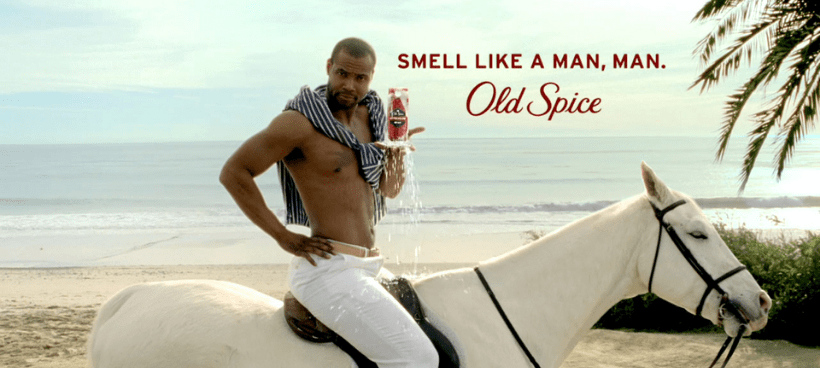
Year: 2010
Media: Television and Internet
This Old Spice commercial is an ad campaign extravaganza that took social media by storm!
Prior to its this Super Bowl commercial, Old Spice was the brand selling deodorant to your granddad. With market share dwindling, the brand needed a pick-me-up. They decided to make product advertising campaigns that targeted a younger generation.
This Old Spice ad campaign launched in 2010 with an attractive man addressing a female audience. He told them that their man could smell like him if he used Old Spice.
Why was he addressing women?
Well, the creatives did their research and found that women purchase almost 70% of all male toiletry products.
That’s not all.
The Old Spice commercial created two-way communication with consumers online that led to 186 personalized videos on social media. People would write questions to Old Spice and The Old Spice man himself would answer.
That’s one hell of an engagement strategy.
Why is the Old Spice commercial so successful?
The ads attracted younger generations with messaging they respond to – humor and sex. Just like the male model who fronted the campaign, the ads appealed to both young men and women, both the key demographics for Old Spice.
The simplicity of social sharing created online advocates for the brand that took the campaign viral. This enabled the brand to start a conversation with their audience.
Naturally, this created engagement that was off the charts!
Old Spice commercial: Results
Within 30 days of the campaign launch, Old Spice saw over 40 million views on YouTube and a 107% increase in body wash sales. Old Spice became the leading brand of male body washes and deodorants in the United States.
Procter & Gamble later reported that the campaign generated:
- almost 105 million YouTube views
- a 2700% increase in Twitter followers
- an 800% increase in Facebook fan interaction
- and a 300% increase in traffic to the Old Spice Website
This massive jump in Social Media engagement helped Old Spice crack the market wide open with a single ad campaign.
2. Nike Campaign – Just Do It
Year: 1987
Media: Print, Television, Internet
To appeal to a larger audience, the brand launched its first major Nike campaign in 1987. Their inaugural ad campaign included a series of television commercials targeting women, children, and non-athletes.
The night before the creative agency presented the new Nike campaign, they added the “Just Do It” slogan. The tagline was questioned by creatives, as well as Nike, before being trialled in the campaign.
No one believed the slogan was necessary or that it would even make an impact, much less become synonymous with the brand.
34 years later it’s still part of Nike’s core mission and the reason “Just Do It” is considered one of the best advertising campaigns ever made.
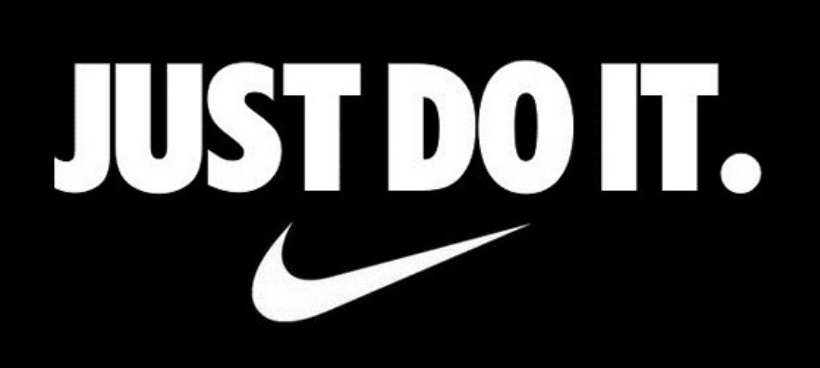
Why is Nike on the best advertising campaigns list?
The empowering slogan resonated deeply with both athletes and people who had little or no connection to sports.
It represented a step towards inclusivity in sport for Nike – a main theme the campaign had set out to reflect. The slogan was a magical combination: it was universally empowering, short, and relatable.
For many, “Just Do It” was more than just another one of those 80s commercials, it became a mantra to live by.
Nike Campaign: Results
Until the “Just Do It” campaign, Nike’s target audience was a narrow range of male athletes in competitive sports. The campaign aimed to change that, including commercials for products related to walking, cross-training, basketball, and women’s fitness.
Before they launched “Just Do It“, Nike was a niche brand struggling to reach new customers. Following the campaign, Nike became a premiere sports brand. Nike reported an increase in sales of 1000% over the next ten years.
3. Dove’s Awareness Campaigns – Real Beauty
Year: 2004
Media: Television, Print, Experiments
Unilever, the creators of Dove, were one of the first companies to introduce sustainability into their business model. No wonder the company set out to improve the self-esteem of women everywhere with awareness campaigns.
Dove’s Real Beauty awareness campaign was the company’s answer to a study reporting that only 2% of women considered themselves beautiful.
The campaign covered more than just print ads and TV commercials. Dove experimented, launching ‘Tick-Box’ billboards which brought 1.5 million visitors to the campaign’s website. Their Real Beauty Sketches video was viewed by more than 50 million people in the first 12 days of launch.
These experiments successfully sparked public conversation and promoted an empowering message for women.
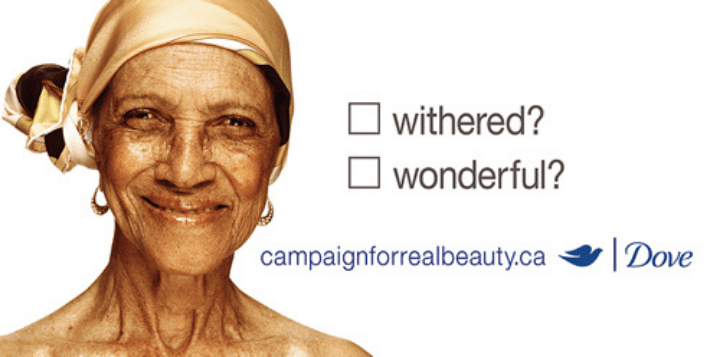
Why are Dove’s Awareness Campaigns on the best ads list?
The Real Beauty ad campaign was notable for its ability to start a conversation with its target audience.
This educational initiative went against mainstream beauty standards. Dove featured ‘average women’ in their commercials alongside provocative messages. This established the brand’s position on thought leadership in beauty equality.
Dove’s Awareness Campaigns: Results
Sales of Dove products jumped from $2.5 to $4 billion in the first ten years of the campaign. Following the campaign, Dove became the number one preferred soap brand in the USA.
Beyond monetary success, the brand created a positive social impact, something very different from other advertising campaigns of the time. This earned Dove invaluable customer loyalty as a result.
4. Absolut Vodka’s Best Advertising Campaign – The Absolut Bottle
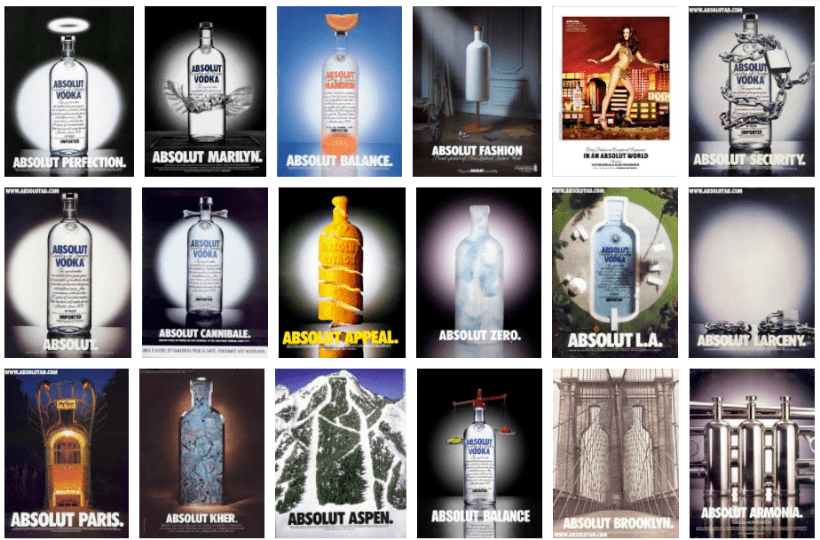
Year: 1980
Media: Print
The bottle that became a star.
This campaign is the longest uninterrupted ad campaign EVER, spanning 25 years, and comprising over 1500 separate ads.
In 1979 the Swedish vodka manufacturer went international. The company was up against oligarch-like Russian brands that dominated the US vodka market at the time.
Absolut had no branding and a bottle that was understated. They needed to stand out against competing brands with more money and higher brand recognition.
At a time when many brands used Russian sounding names to capitalize on consumer perceptions, Absolut went in a different direction. They advertised themselves as a stylish and contemporary brand of superior quality.
All 1500 of their advertisements featured Absolut’s distinctive bottle in new and creative ways. These often included elements of the cultural zeitgeist, such as featuring an illustration by Andy Warhol in 1986.
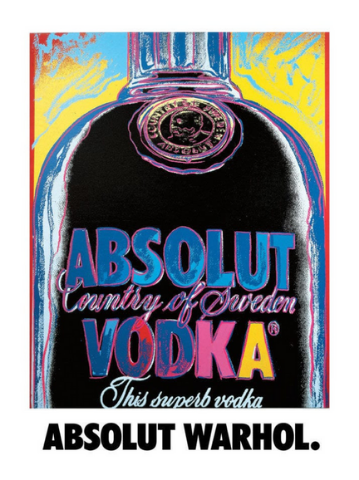
Why does Absolut make the list of Best Advertising Campaigns?
Absolut went out of its way to avoid any comparison with rival brands. Their positioning strategy focused on advertising a product that felt unique and one-of-a-kind.
Through visual merchandising Absolut promised consumers a whole new experience, by offering something they didn’t know they needed.
The ad campaign successfully combined visual and verbal puns around simple eye-catching imagery.
Absolut Vodka Best Advertising Campaigns: Results
Absolut had a lowly 2.5% market share in the US when the campaign began. By the time the campaign ended in the mid-2000s, their market share had jumped up to 50%.
During that time, sales drastically increased from 10000 cases in 1980, to 4.5 million in 2000!
Cheers to that! Absolut found the perfect way to grow sales, reach AND subsequent revenue, all with a single ad campaign.
5. Levi’s Best Advertising Campaign – Casual Business Wear
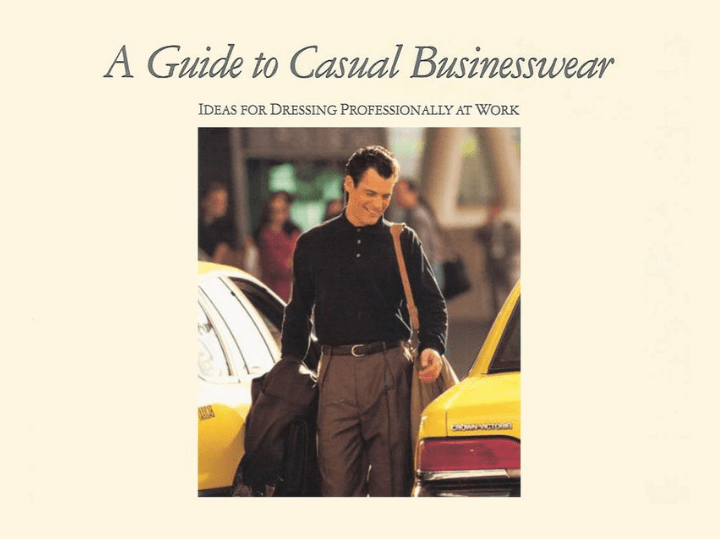
Year: 1992
Media: Print
In 1992, Levi’s sent a pamphlet to 25000 HR departments in the US. This pamphlet turned out to be the key to solving the sales slump Levi’s had been experiencing. Increasing competition from low-cost overseas products were hurting their bottom line.
Levi’s identified a unique business opportunity: a new trend had for wearing casual clothes to work had emerged. However, not everyone was onboard, believing “casual” had been misinterpreted as a green light for inappropriate and unprofessional.
Levi’s figured the casual wear trend was here to stay. Their marketing team decided to create a guide to casual businesswear. Their pamphlet included guidelines on appropriate “casual business wear,” with Levi’s products featured throughout the guide. An ad campaign in disguise.
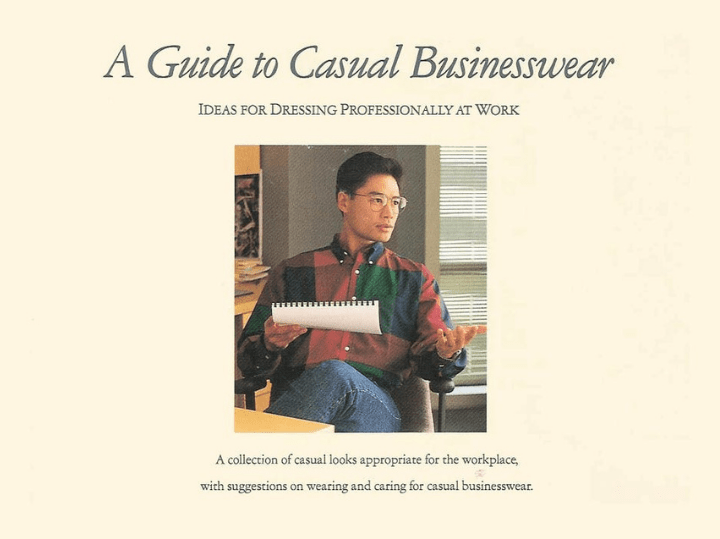
Why was Levi’s ad campaign such a success?
The best commercials don’t always look like commercials. The campaign aimed to solve consumer problems by answering the question “What is business casual?”
The foundation of Levi’s success was education, building a campaign out of instructional material. This motivated HR managers to distribute Levi’s advertising to its target customer in a way that felt authentic and natural.
By creating these guidelines the brand advertised itself as the solution to a growing problem. Levi’s innovative campaign opened up a brand new market for workwear for an entire generation of professionals.
Levi’s Best Advertising Campaigns: Results
When Levi’s began its campaign, only 66% of companies had a dress code. Three years later, that figure had risen to 90%. By 1995, Levis reported a 10% increase in sales from the year before, amounting to $6.2 billion.
The out of the box thinking is what led the campaign to be considered one of the best advertising campaigns made.
6. California Milk Processor Board – Got Milk?
Year: 1993
Media: Television and Print
Imagine pouring your cereal into a bowl, slicing in some fresh fruit, and then… NO milk!
In 1993, a focus group discovered this was a common occurrence. Discovering this, the California Milk Processing Board (CMPB) hired an agency to advertise milk.
Due to the public’s disinterest in milk, the team employed deprivation marketing. Selling the need for an uninteresting product suddenly became an opportunity: they advertised a lack of product.
Using the catchphrase “Got milk?” the CMPB produced humorous television ads reminding people of all the worst-case scenarios if they ran out of milk.
This was followed by an awareness campaign with the now-famous milk moustaches, licensing CMPB’s catchphrase: “Got Milk?”
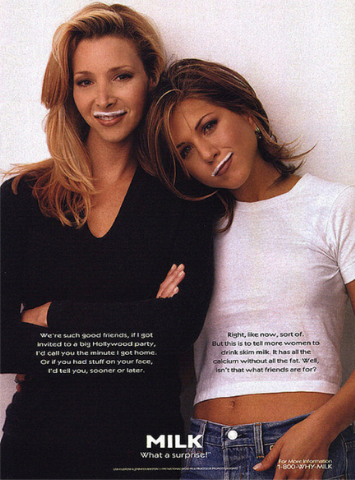
Why is it a part of the Best Advertising Campaigns?
It’s relatable, short, funny, and your favorite celebrity supports it.
The campaign began with the now-iconic 90s commercials. The ads were relatable, speaking directly to a common frustration.
The CMPB advertised to their current customers instead of trying to acquire new ones. By selling missing milk, they created a funny, memorable experience that encouraged regular customers to stock up.
Got Milk? Campaign: Results
After one year, the campaign resulted in a 7% sales increase in California. The campaign ran for 21 years, generating over 70 TV commercials in California alone. Complimentary milk moustache print ads appeared all over the US.
During the advertising campaigns lifetime, an estimated 80% of US consumers came into contact with the campaign at any given day.
7. Anheuser-Busch (Budweiser) – Whassup Beer Advertisement
Year: 1999
Media: Television
If you didn’t know this campaigns iconic catchphrase from their tv ad campaign, you might have seen it in Scary Movie, Friends, or on talk shows.
This catchphrase is a piece of early 2000’s pop culture.
The Anheuser-Busch marketing team’s approach to advertising was to predict the next big thing by following new art forms and the underground film scene. Use of language and attitude in emerging art forms were then used to target their audience: mostly men in their 20’s and 30’s.
They approached the creative process behind the beer advertisement by asking the question “would this make it on to late-night talk shows?”
Why is this ad a part of the best advertising campaigns?
The buzz!
The key element in this campaign was content that created buzz. Anheuser-Busch’s main content writing tip is demonstrated brilliantly by the creative approach they took in writing authentic new content for their audience. The Budweiser ads were just so different from other 90s commercials.
They created conversation starting content that people would adopt in everyday life. The catchphrase was absorbed into pop culture, making it one of the pervasive ad campaigns ever made.
Whassup Beer Advertisement: Results
The campaign helped Anheuser-Busch’s products stay top of mind with consumers. Everyone used the Budweiser catchphrase. The company’s worldwide sales grew by 3% in one year, to 99.2 million barrels sold in 2000.
More than this, Budweiser created a cultural legacy. Something other advertising campaigns could only dream of.
8. McDonald Advertisement – I’m Lovin’ It
Year: 2003
Media: Print and Television
2002 was a challenging year for McDonald’s. The company was facing issues varying from employee satisfaction to stock price decline. The value of their stock had decreased from $40 to under $15.
Customer perception was growing increasingly negative and McDonald’s was at risk of becoming irrelevant. The company had lost the connection with their audience.
The brand’s advertising department recognized the need for a change. McDonald’s outdated mass marketing was replaced with something fresh.
McDonald’s marketing team put customers at the heart of the new campaign. That’s why “I” was used: it let people tell McDonald’s how they felt about the brand.
“i’m lovin’ it” was born, revitalizing the brand. The change made McDonald’s relevant to a younger audience.

What makes the McDonald’s advertisement good?
The McDonald’s advertisement marked a change from mass marketing to more personalized marketing. This aligned with trends in how brands communicated with their customers. The catchphrase spoke to the simple pleasures in people’s lives, McDonald’s being one of them.
By adopting a personalized advertising strategy the brand re-established its connection with consumers, and regained employees and franchisee’s trust in the company’s leadership.
McDonald Advertisement: Results
Three years after the campaign launch, sales had increased and share price had moved from $13 to $45. Reenergizing the brand with the slogan “i’m lovin it” helped keep McDonald’s relevant.
McDonald’s indicated that the campaign achieved 86% awareness in its top 10 markets – that’s basically everyone with a TV!
“I’m lovin’ it” became the slogan for McDonald’s – with many of the themes established in the “I’m lovin’ it” advertising campaigns still used today.
9. Dos Equis Beer Advertisement – The most interesting man
Year: 2006
Media: Television and pre-roll
“I don’t always drink beer, but when I do I prefer Dos Equis”.
This phrase was spoken by the ‘most interesting man in the world‘ in this ad campaign for Dos Equis. The campaign was different from any other beer advertisement because the catchphrase suggests the person selling the beer doesn’t always choose it.
However, this resonated with occasional beer drinkers – an audience no one was targeting at the time.
This campaign made the brand seem effortlessly cool. The beer commercials were funny without trying too hard, and the use of a suave and sophisticated gentleman only added to the feeling of cool.
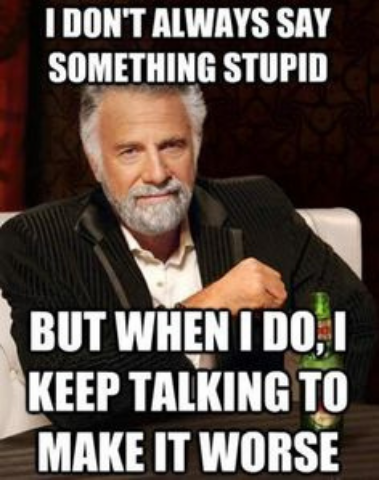
Why is it a part of the Best Advertising Campaigns?
This campaign just plain entertaining and funny, even a bit ridiculous.
People responded to due to the pure entertainment factor. The campaign went viral and became one of the most recognized memes of the moment, trending on social media.
Using the brand name in the advertisement distinguished the brand. The online buzz that the campaign generated put Dos Equis at the centre.
Dos Equis Beer Advertisement: Results
At the time imported beer in the US was suffering from declining sales, largely due to competition from US-produced craft beer. After the Dos Equis ad went viral, sales shot up 22%!
Total growth from 2007-2016 was 34.8%. A significant result as mass-market beer continued to feel the heat from craft breweries.
10. Coca Cola Advertisement – Share a Coke
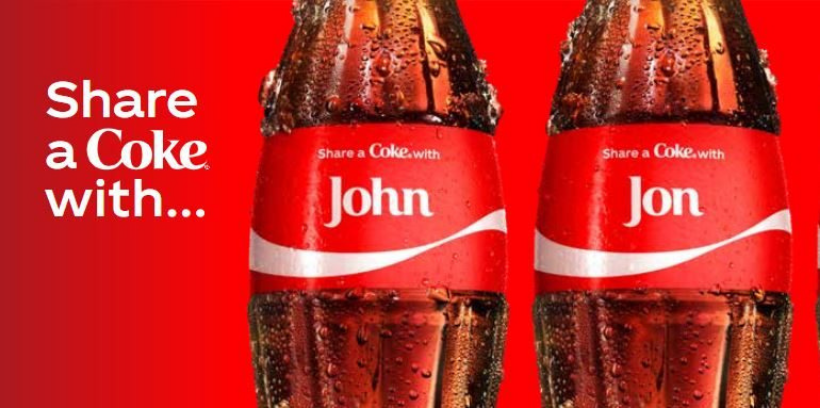
Year: 2011
Media: Print, packaging, social media
Another perfect example of taking mass marketing to a more personalized experience!
In an increasingly crowded market brands are aiming to connect with their audience on a more personal level. The Coca Cola Company created one of the best advertising campaigns ever by combining old-school mass marketing with a modern approach – and a personal twist. This turned out to be a winning approach to reach the teenage demographic.
For a decade prior to this Coca Cola advertisement, the carbonated soft drink category had been facing a volume decline. This was a major concern for Coca Cola as it caused a lack of connection with younger generations.
To younger consumers, Coca Cola was their parents’ drink.
To combat this perception, Coca-Cola created the “Share a Coke” campaign to make a more personal connection with US teenagers.

What makes the Coca Cola Advertisement good?
Two elements differentiated this Coca Cola advertisement from the brand’s previous campaigns.
Coca-Cola first recognized the value of packaging as an important piece of owned media. Secondly, the company engaged teens by entering spaces they used (namely social media) with the hashtag #ShareaCoke.
Besides generating buzz around the brand, the “Share a Coke” slogan was also a call-to-action for consumers to buy more products.
Coca Cola advertisement: Results
Coke might have had other successful advertising campaigns in the past, but this one was so impactful as one of Coke’s earliest adoptions of Social Media.
The campaign generated more than 18 million media impressions, and traffic to the Coca Cola Facebook page increased by 870%.
The Coca Cola ad influenced 1.25 million more teens to try Coke than the previous summer. Sales rose by 11% in the US, the most successful market in which the campaign was launched.
11. Red Bull’s best advertising campaign – Red Bull Stratos
Year: 2012
Media: Internet, Live Event, Experiment
Red Bull is known for hosting special events that act as the commercial itself. With strong ties to extreme sports, the brand has established thought leadership on events related to extreme sports.
For the Stratos campaign, the brand aimed to create a global online event that would combine the interest of science, engineering, extreme sports, and fantasy. The total budget for this single campaign was 1/10th of Red Bull’s annual global marketing budget ($330m).
Felix Baumgartner, an extreme skydiver, was the frontman for the event. Red Bull helped him become the first man to break the sound barrier by free-falling from the stratosphere over New Mexico. Felix broke the sound barrier by diving roughly 39km, SETTING one world record, and BREAKING two existing ones.
Stratos set a new benchmark in experiential brand marketing and instantly became one of the best advertising campaigns ever made.
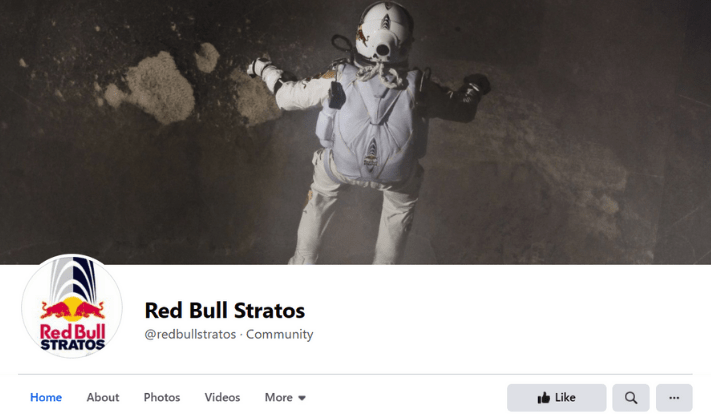
What made Stratos so clever?
Red Bull had a captivating story – the journey to achieving a record-breaking skydive. They shared this story with their audience throughout the development phase – 2 years prior to the event. This built up social media engagement so that by the time the event occurred, everyone was tuned in.
The content creators made authentic content that would change history. Not everyone has a budget to move mountains, but everyone can create authentic and original content.
The event wasn’t interrupted by commercials for Red Bull. The event WAS the commercial. Moreover, the event was aligned with the brand’s ideals – giving consumers an energy drink that “gives you wings”.
Red Bull Stratos Campaign: Results
During the event, 8 million people were watching live and Red Bull blew up social media with massive engagement across all the major platforms. Red Bull also recorded an additional 2 million new subscribers across their owned-media channels in 15 days.
As a result sales increased by 7% in just 6 months, creating an added value of $1.6bn for the brand. This was followed by a 13% increase the year after, selling 5.2bn cans of product. In some regions sales even doubled.
More than the recorded sales however, Red Bull made a lasting impression on an entire generation. Everyone remembers where they were when everything stopped to watch a man skydive from space.
12. Sprite’s Best Advertising Campaign – Obey your thirst
Year: 1994
Media: Television and Print
The best commercials are not always about promoting something new. Often it’s about taking a step back and rethinking the perception your product or service has.
Up until 1992, Sprite was marketed solely as an alternative to Coca Cola. However, this proved unappealing to consumers and Sprite ended up being removed from the shelves.
It was eventually relaunched in 1994, but this time Sprite was rebranded as a mainstream product. Sprite was reintroduced with a strong connection to hip-hop culture and quickly resonated with urban teens and African Americans.
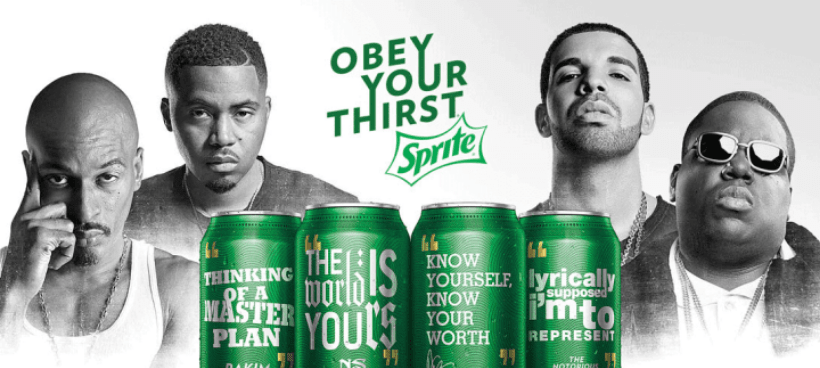
Why is it a part of the Best Advertising Campaigns?
Sprite’s 1994 ad campaign is a major success story in repositioning.
Sprite appealed to the younger generation by establishing a strong connection with rap and hip-hop culture. This culture was associated ‘real talk’, and the catchphrase played into. “Obey your thirst” reflected that culture of self-expression and encouraged teens to stay true to themselves.
Sprite’s Best Advertising Campaigns: Results
By changing the product’s perception Sprite became the carbonated-beverage category’s fastest-growing brand for five years. In 2000 the drink had tripled in sales and earned its spot as the 6th most popular soft drink.
These impressive results couldn’t be boasted by most 90s commercials, making Obey your thirst one of the best ads the soda industry has ever seen.
13. Always Awareness Campaigns – #likeagirl
Year: 2014
Media: Television, Internet, Experimental
Proctor & Gamble-owned brand Always continually fight for the rights of women and girls all around the world. In 2014, their annual Confidence and Puberty survey reported that only19% of women in the ages 16-24 had a positive association with the expression ‘like a girl’.
To combat this, Always launched the #LikeAGirl awareness campaigns with the objective of shedding light on the power of words. The ads demonstrated how the negative connotations of the phrase “like a girl” have an impact on girls’ self-confidence.
The brand set out to support girls during puberty and appeal to women of all ages by breaking a damaging stereotype and reinventing what it means to do something “like a girl”.
The ad was lauded for its empathetic tone and became a Superbowl homerun!
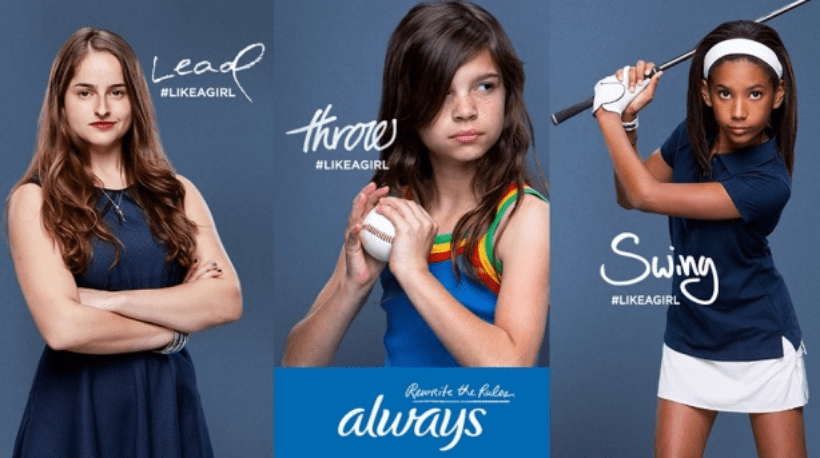
Why was the Always Awareness Campaign so successful?
Until 2014, Always’ campaigns had focused on product performance. However, the brand changed strategies to reinforce relevancy to a younger generation and connect with them on an emotional level.
The campaign was a social experiment demonstrating people’s reactions when asked to “do something like a girl”. Always created content that sparked a conversation. The ad not only became one of the best advertising campaigns for Always, but created a social movement in the process.
The hashtag #likeagirl gave a voice to the audience, amplifying the social message of the campaign. The ad led consumers to positively associate the brand with female empowerment, building awareness and engendering customer loyalty.
Always Awareness Campaign: Results
The brand achieved more than 85m views on YouTube from people in more than 150 countries and the video was shared by more than 1.5 million people around the world. As a result, Always’ brand equity increased significantly.
The campaign also generated a positive social impact. A study of 16-24 year old girls reported a huge change in perceptions of the ‘like a girl’ phrase. Before the campaign 19% of participants viewed the phrase positively, but 76% said they no longer saw the phrase in a negative light after watching the video.
14. KFC’s Best Advertising Campaign – FCK

Year: 2018
Media: Print
In 2018 KFC turned one of their biggest failures into one of their best ads.
The fast food chain known for its fried chicken, ran out of friend chicken. The incident was caused by a change food delivery specialists. The switch didn’t go as planned and the new supplier struggled to deliver.
The situation escalated until stores had to close due to lack of resources, including chicken. KFC was the joke of the nation.
After things had settled down the company released a print campaign that advertised an apology.

Why is it a part of the Best Advertising Campaigns?
The ad campaign stated that KFC took full responsibility for the screw-up, apologising not only to their customers but also their employees. Owning their mistakes and making fun of the situation helped humanize the brand and the people behind it.
Not only that, but the campaign generated an endearing brand persona for KFC. Consumers shared the campaign on social media and it quickly went viral all over the world. People loved the apology more than they hated KFC’s screw-up, and the brand was forgiven practically over-night.
KFC’s Campaign: Results
If most advertising campaigns focus on highlighting the best parts of your product, KFC went against the grain with this one.
By acknowledging their mistake and sprinkling in some humor, the ad helped KFC emerge from the situation without any lasting brand damage whatsoever.
15. Wendy’s Best Advertising Campaigns – Where’s the beef?
Year: 1984
Media: Television
You might know Wendy’s from their hilarious Tweets and social media burns.
But Wendy’s sassy attitude was part of the brand’s personality long before social media even existed.
In 1984 the company ran a television campaign that advertised the fact that their burgers contained more meat than their competitors, McDonald’s and Burger King.
The company brought in Joe Sedelmaier, an art director known to cast everyday people in his ads and create humorous content in 80s commercials.
What came out of the collaboration was an iconic television commercial featuring three older women. Two admiring the big bun in front of them, the other asking the important question “Where’s the beef?”, a catchphrase that would later have a tremendous impact on pop culture.
What made Where’s the Beef one of the best commercials ever?
The company took a stab at its competitors’ burgers with an entertaining approach. People remembered the catchphrase and associated it with Wendy’s because the phrase was short and simple, funny, and exaggerated the truth.
The topical phrase went on to spark conversation. The slogan proved extremely pervasive, making appearances all over the media, and even in the 1984 US presidential election. Generating this kind of earned media in the pre-internet age was invaluable, and unheard of. A huge win for Wendy’s.
Wendy’s Best Advertising Campaigns: Results
Wendy’s has always been known for coming up with novel and successful ads, but Where’s the beef? has to be one of their best ads.
The campaign paid off for Wendy’s, generating 10% more sales in the US in 1984 than they did the year before. Worldwide sales also shot up to $945 million, a whopping 31% jump. This cemented Wendy’s place as the third-largest burger chain in the world.
16. Gregg’s Best Advertising Campaign – The wait is over
Year: 2019
Media: Internet
The vegan sausage roll that became an internet sensation.
Greggs, the down-to-earth bakery chain, responded to their customers demands for a vegan sausage roll.
The launch of the vegan sausage roll was backed by the company’s killer social media campaign.
On January 3rd, 2019 the bakery released a slick video ad similar to those that promote the newest iPhone. The video caption read “The wait is over”, advertising the much anticipated launch.
This pompous, self-absorbed campaign was designed to be satire. Coming from a low key bakery like Gregg’s, people found it hilarious. The campaign paid off, capturing everybody’s attention, including political commentators.
What makes it one of the best advertising campaigns?
By adopting a style from the tech industry, the brand differentiated itself from other baked goods retailers. The tone of voice perfectly conveyed the brand personality, giving consumers a new image of what they could expect from Gregg’s.
Consumers got involved via social media and the vegan sausage roll quickly gained a huge online fanfare.
Greggs Best Advertising Campaign: Results
The best ads always come from the simplest ideas. Gregg’s simply released the product and let consumers do the advertising themselves.
The publicity surrounding the vegan sausage roll boosted the number of customers in Gregg’s bakeries, making it hard to keep up with demand. Sales grew by 10% and Greggs reported annual profits significantly higher than expected.
17. WestJet – Christmas Miracle Campaign
Year: 2013
Media: Internet
Until 2013, whenever somebody mentioned Christmas you probably start singing Jingle Bells. Lately, it’s more likely you will start thinking of WestJet Airline!
One of the preferred Canadian airlines, WestJet has become a symbol of Christmas festivities, and rightly so!
In 2013, just a day before Christmas, WestJet launched a campaign in Toronto and Hamilton that is remembered to this day.
What was so special about this campaign is that they used a virtual Santa Clause to chat with passengers at the airport. He asked them what they wanted for Christmas.
Then, whilst the passengers were aboard their flight, the WestJet crew listed all the items and bought the gifts. Then, when the plane landed, WestJet released the gifts at the baggage claim to the surprise of all the passengers!
This fantastic and unique campaign turned viral and helped WestJet achieve huge recognition and popularity, forever relating it to the holiday festivities and traditions.
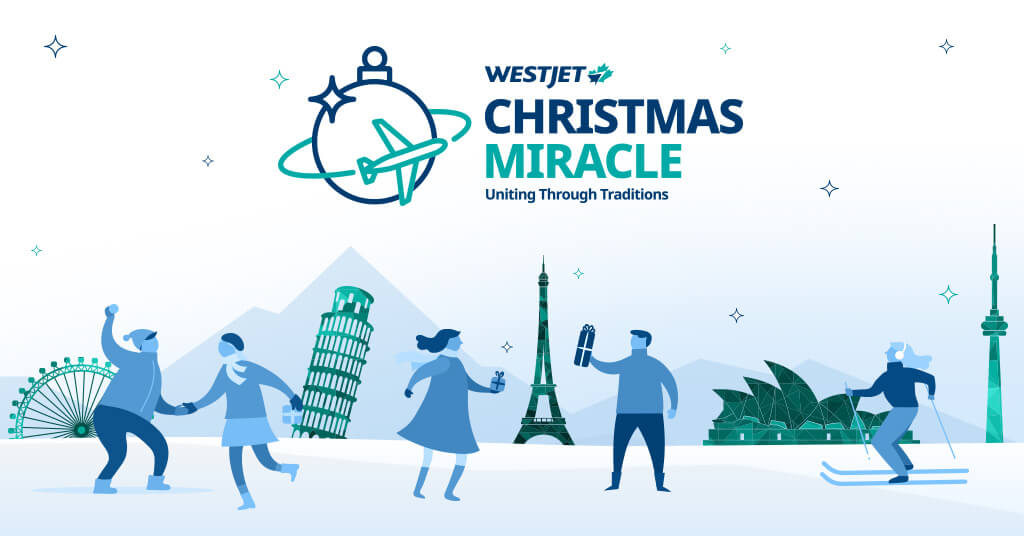
What makes WestJet one of the best advertising campaigns ever?
Every campaign’s goal is to trigger viewers’ emotions and leave a long-lasting impression. And in the case of a charitable-giving campaign like this one, to associate the brand with altruism and goodwill.
WestJet undoubtedly succeeded in that. WestJet managed to brand their product by engaging their clients, catching the sentimentality of the season, and putting them in the ultimate Christmas-spirit mood.
In return, their customers shared WestJet’s ad on social media, throwing the airline into the international spotlight.
WestJet’s Christmas Miracle Campaign: Results
WestJet proved that, with some investment, you can achieve astonishing results.
Their Christmas Miracle campaign led to an astonishing 86% increase in sales, and their advertisement became one of the most-watched on YouTube in 2013.
WestJet succeeded in raising their brand awareness and customer loyalty not only in Canada but internationally.
18. Mercedes-Benz – The Invisible Car Campaign
Year: 2012
Media: Internet, Television
Has Mercedes invented Harry Potter’s invisibility cloak? Not quite, though they did a marvellous job replicating the idea.
To promote their newest car and one of the first run on hydrogen fuel, Mercedes created an “invisible” car to communicate the idea that their car is invisible to the environment. This campaign was a clever way of sharing that the car had zero emissions and was eco-friendly.
Mercedes covered the car in LEDs and tiny cameras. The LEDs displayed the images captured by the cameras on the opposite side of the car, just like the Aston Martin Vanquish in the James Bond movie: Die Another Day!
This was another example of ‘Sci-fi’ themes becoming a reality, and people LOVED IT!
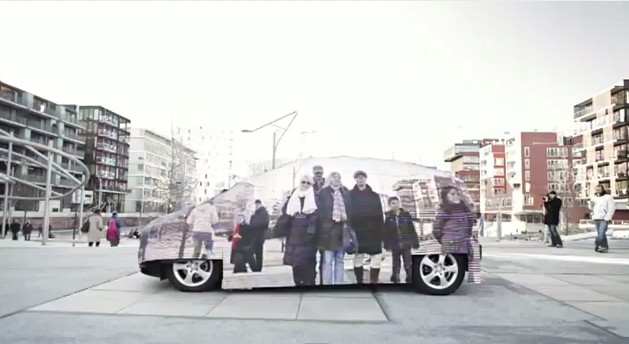
What was so revolutionary about the Mercedes-Benz campaign?
Well, the fact that they managed to make an actual, not just for-the-movies ‘invisible’ car is revolutionary by default. But the James Bond tie-in really sparked 007’s fans’ imagination.
What Mercedes did related their brand to a pop-culture hero known for his sleek and suave demeanour, who also loves cars! The outcome – everybody who purchased the car can become a hero themselves, as well as environmental protectors!
This was a fantastic branding strategy that also rose awareness of the issues going beyond the brand itself. Mercedes showed that their brand has a higher purpose that people can contribute to by purchasing their product.
The Invisible Car Campaign: Result
The strategy Mercedes-Benz used for this marketing campaign was to promote a product that was not even on the market yet! The F-CELL car was first released in late 2019, seven years after the ad came out!
So, what was the intention of their advertisement? Mercedes succeeded in creating a long-lasting buzz and made people talking about their brand and anticipating the launch of the world’s first electric car.
19. Pepsi Commercial – We Will Rock You
Year: 2004
Media: Internet, Television
Pepsi is well-known for their creative and unique commercials, often with a world-famous cast. The Pepsi Super Bowl Commercial is always hotly anticipated and typically viewed by an audience of millions.
Pepsi’s 2004 commercial, starring Beyoncé, Britney Spears, Pink, and Enrique Iglesias, is probably the most famous and well-remembered one.
Set in ancient Rome, three female gladiators are ready to fight a Roman Emperor (Enrique in this case). He is evidently unaware of what will happen to him since he is casually drinking his cold Pepsi soda.
The three ladies enter the arena and to everybody’s surprise, drop their weapons and start singing a powerful rendition of Queen’s We Will Rock You.
The Emperor gets eaten by the lions, while Beyoncé, Britney, and Pink drink a cool and refreshing Pepsi.
This expensive yet eye-catching and one-of-a-kind commercial has been a hit in 2004 and is still regarded as the best Pepsi commercial ever made.
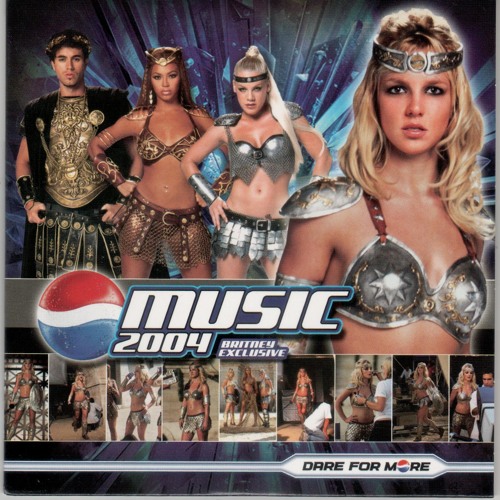
What makes Pepsi’s best advertising campaign?
The fact that the biggest four stars of the 2000s starred together in this commercial is enough to make it legendary.
This combined with the hype around The Gladiator movie and the iconic We Will Rock You – a song every living person knows. Pepsi created ultimate commercial perfection that would appeal to both men and women, different generations, and would successfully air around the globe.
If you are looking for a recipe for success, Pepsi is a master chef you’ve been searching for!
Pepsi Commercial: Results
Upon release, Pepsi commercial was aired in more than 170 countries and the video today has over 39 million views on YouTube.
During a one-year-long campaign, Pepsi cemented its place as one of the top soda companies and in 2004 released different flavors of its popular drink.
20. DirectTV – Don’t Wake Up in a Roadside Ditch Campaign
Year: 2012
Media: Internet, Television
Humorous content is everybody’s go-to content when they need to relax and laugh. What a better way to gain an audiences’ attention than creating a witty and creative commercial you know people will enjoy watching! This type of content always leaves an enduring impression on viewers.
DirectTV accomplished just that! In their commercial, they metaphorically presented all the possible situations people can get involved in if they don’t replace their cable TV with DirectTV.
From getting yourself hit with a ball to getting into a fight and finally waking up in a ditch – DirectTV went used humour and exaggeration to show their potential customers how disastrous it can be if they don’t switch to DirectTV.
The viewers loved the commercial, and it soon turned into a hit in the US!
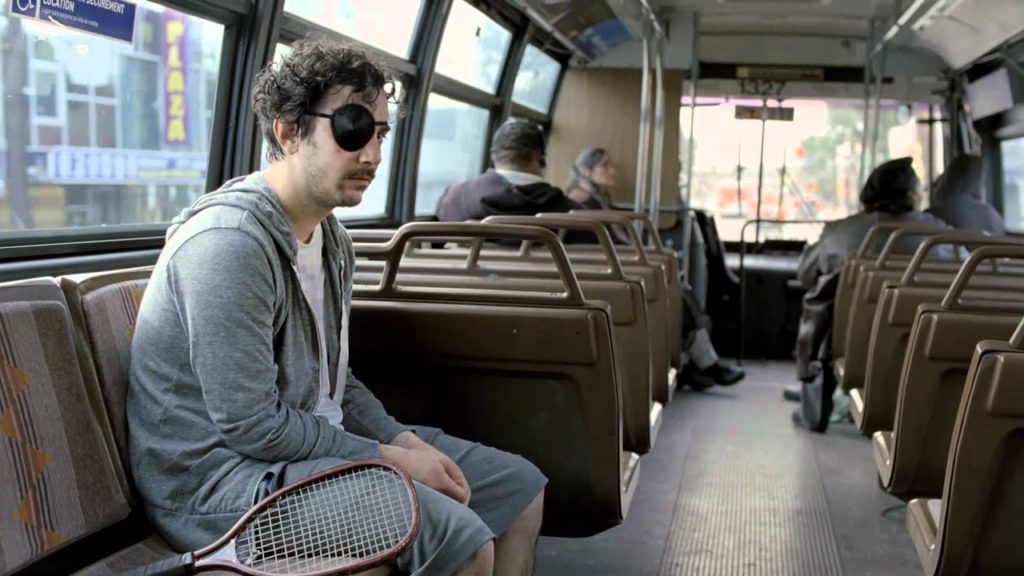
Why is DirectTV on the Best Advertising Campaigns list?
DirectTV used a clever marketing strategy to build trust with viewers. Through humor they managed to attract a substantial number of new customers.
They branded their product as a problem-solver on the market and, through metaphor, convinced their customers their product is worth their investment.
DirectTV Campaign: Results
The Don’t Wake Up in a Roadside Ditch campaign was a genius move by DirectTV, which helped them achieve above 96% organic traffic. As a result, DirectTV became one of the preferred TV providers in the US.
Thanks to the campaign, their website has also been visited from more than 250 countries.
21. Bud Light – Axe Commercial
Year: 2007
Media: Internet, Television
The Super Bowl is the period when you see the most innovative commercials. Brands compete over who will create the best advertising campaign and gain new customers.
It is a perfect time for companies to raise their brand awareness – millions of people are following the Super Bowl every year! Bud Light is among many who created brilliant campaigns for their products during this time.
In their whimsical commercial, Bud Light shows a couple driving in a car and stopping to take in a hitchhiker. The girl, evidently scared of the stranger (who is holding an axe by the way), tries to deter her boyfriend from taking him in. The boyfriend, however, is hypnotized by the six-pack Bud Light in the hitchhiker’s hands.
They give the stranger a ride, and then another hitchhiker shows up holding a chainsaw and another pack of Bud Light. Even the first hitchhiker comments: “Yeah, but he has a chainsaw.”
Bud Light’s campaign used an unusual and hilarious way to show how appreciated their product is. Not even a fear of death could deter you from drinking their refreshing beer!
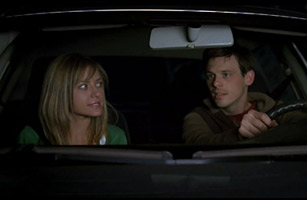
Why was Bud Light’s Ad Campaign so successful?
Through their campaign, Bud Light managed to put their product above everything else.
The strategy they used is great for challenging the viewers to purchase the product and see what the buzz is all about. And we all know that selling the product is the end goal of every company!
Bud Light Axe Commercial: Results
The 2007 Super Bowl was watched by almost 100 million viewers and Bud Light’s commercial received extremely high viewership.
The increased brand recognition led Bud Light to becoming the number ONE beer in the US in the years to come.
22. Chipotle – Back to the Start Campaign
Year: 2012
Media: Television, Internet
In 2012, Chipotle came up with a marvelous campaign to promote their food production philosophy.
In their two-minute-long animated video, they showed a farmer slowly turning his farm into a mass-production company and switching from a rural area to a grey and polluted city.
The farmer realizes that the only way to lead a healthy life is through sustainable farming and consequently goes back to traditional farming.
Coldplay’s song The Scientist plays in the background, a country cover performed by Willie Nelson.
The animation video aired during the Grammy Awards and viewers were encouraged to purchase the theme song for $0.60 as a donation to the Chipotle Cultivate Foundation.
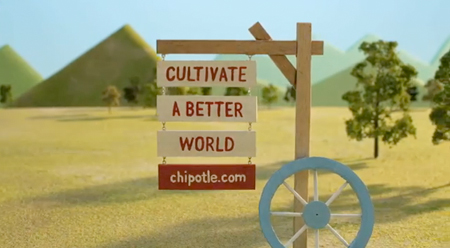
What made Chipotle’s Campaign so popular?
Chipotle used an appealing way of raising awareness of the disadvantages of mass food production.
What’s more, they showed their audience that they are concerned about customers health and well-being and are doing everything to provide them with healthy and organic produce.
This promotional campaign was a fantastic strategy for raising brand awareness and encouraging viewers to become customers.
Chipotle Back to the Start Campaign: Results
Their emphasis on sustainably grown ingredients brought Chipotle $2.3 billion in sales in 2012.
Moreover, with more than 300 million viewers, their video stirred a lot of conversation regarding organic food production.
Chipotle received worldwide recognition for their contribution to organic farming and sustainable food production and claimed over 80 awards.
23. BMW – The Hire Campaign
Year: 2001
Media: Internet, Television, Audio Books
In 2001, BMW came up with the revolutionary and never-before-seen idea of creating a mini-series of short movies in which they promoted their cars.
The series consists of three seasons, nine episodes, and an hour-long movie. Among the many famous names that starred in the movies you can find Madonna, Clive Owen, Adriana Lima, Mickey Rourke, and many others.
The first episode, The Ambush, shows a Driver (Clive Owen) driving in a BMW 740i. He is confronted by several armed men who are looking for stolen diamonds. The Driver decides to help the thief escape and a car chase ensues.
Of course, driving a BMW, the Driver easily gets away.
BMW was the first company to ever release this type of advertising campaign and, for that reason, the campaign is still regarded as a basis and a benchmark for content marketing.
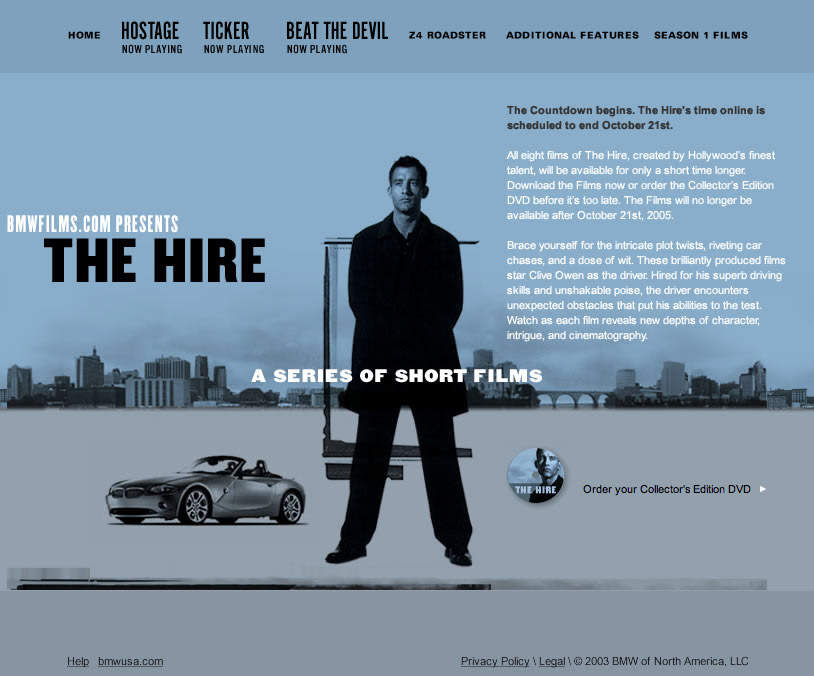
Why is BMW’s campaign on the best ads list?
Not only did BMW manage to promote their brand and cars through this campaign, but they did it by hiring the most renowned names in Hollywood.
What’s more, they were the pioneers of branding their product using this content strategy. BMW used innovation, with which they successfully reached their target audience and set a standard for many more car campaigns to come.
BMW – The Hire Campaign: Results
Besides the many awards BMW received for their unique and creative short movies (Cannes International Advertising Festival included), The Hire was seen more than 45 million times by 2003! Today it has more than 100 million views.
Between 2001 and 2002, BMW’s sales rose 17.2% which put BMW in first place as the most popular car company in the world, followed by Mercedes and Lexus.
24. Twix – It’s Time to DeSide Campaign
Year: 2012
Media: Internet, Television, Print, Outdoor Communication
Which team are you on Left Twix or Right Twix? We have probably all seen this hilarious and memorable commercial and tried to DeSide which Twix bar we preferred.
Twix came up with an imaginative way to promote their product by using people’s natural desire to pick sides. In this ad, Twix shows two manufacturers fighting over whose side of the same Twix bar is better.
The idea the company had was to create a rivalry between the Left and Right Twix and put the brand in the center of the feud. The first ad was followed by others of the same kind and stirred up a lot of discussion.
Twix even created packaging for the left and right bar, so consumers could choose their preferred one. Truly a genius way of branding your product and targeting the right audience.
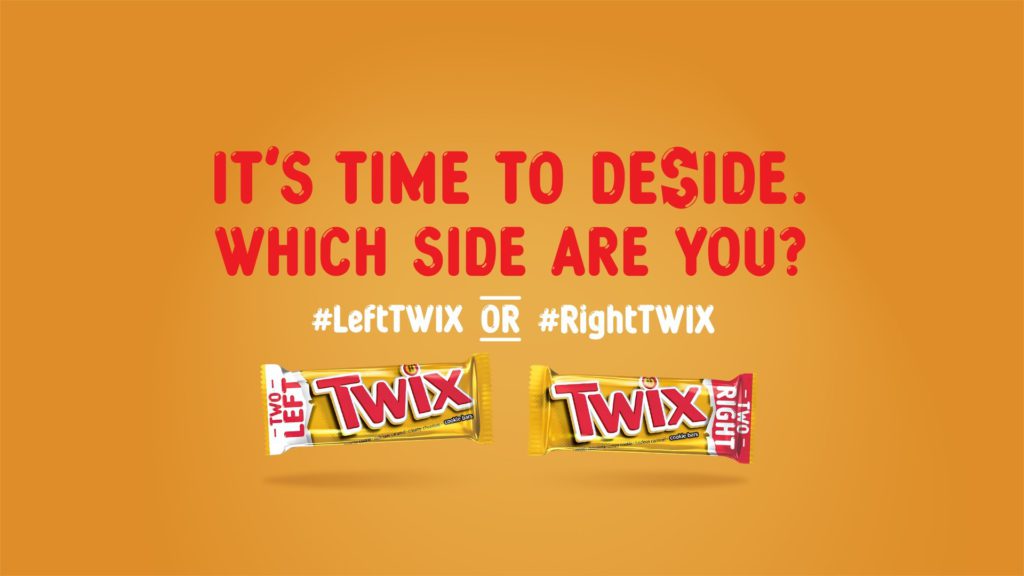
What made the Twix Campaign one of the best advertising campaigns ever?
Twix wittingly succeeded in reaching their target audience through humorous and playful content. Moreover, through their commercial, they created a buzz about their brand.
Today, the campaign has moved to social media where you can still come across #LeftTwix and #RightTwix hashtags. Bearing in mind that the campaign started almost 10 years ago, this is a sure sign they did an amazing job in advertising their product.
Twix – It’s Time to DeSide Campaign: Results
Twix remains one of the most popular chocolate bars in the world. Whether we are Right Twix or Left Twix fans, the bottom line is we enjoy both sides equally. Twix is tasty, affordable, and easy to find.
The It’s Time to DeSide Campaign helped Twix in creating a new and stronger brand identity by using different channels: YouTube, Facebook, Instagram, etc.
Subsequently, Twix has created multiple versions of their product: single packs, minis, and a box of six bars, thanks to which consumers can choose the perfect one to satisfy their sweet tooth!
25. De Beers – A Diamond is Forever
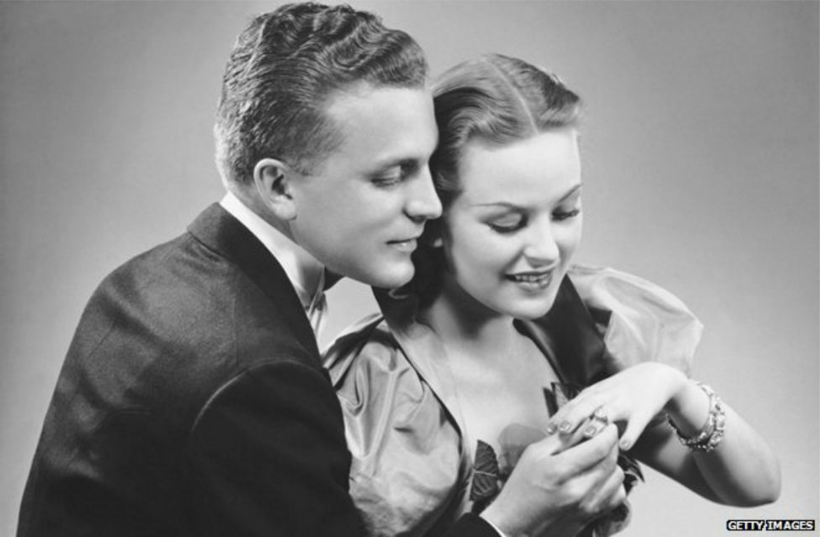
Year: 1940s
Media: Print, Television
We couldn’t leave this gem (lame pun intended) off the list. Even old commercials like De Beers can have a lasting affect on consumer behavior.
Have you ever wondered why you need a diamond ring to get married? Because an ad campaign said so! The jewellery cartel De Beers is responsible for our perception that a diamond ring is a necessary luxury.
The Great Depression was a challenging period for many companies, including De Beers. That is, until they came up with the idea to connect their product (a diamond ring), with a common life event (engagement).
Through successful marketing campaigns, this idea became embedded in Western Culture. The creativity and thought leadership this demonstrated is what makes this campaign one of the best advertising campaigns ever made.
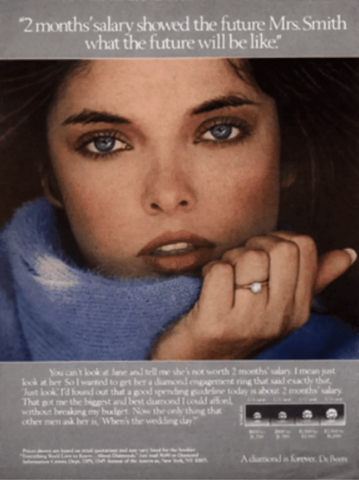
Why was it so impactful?
The company used traditional marketing to promote the idea that a diamond ring is a life-long investment, just like marriage. By connecting the two, De Beers created what later became a cultural norm. A proposal with a diamond ring.
De Beers Campaign: Results
At the beginning of World War II, only 10% of engagement rings contained diamonds. By the end of the 20th century, this had reached 80%.
Not only did the advertising campaign increase the number of diamond rings sold, but also the amount spent on a ring. Most old commercials were not so ambitious. De Beers told customers that the appropriate amount to spend on an engagement ring was two months salary. One print ad contained the caption “Two months’ salary showed the future Mrs Smith what the future would be like.”
Genius right?
What can you learn from these ads?
What these ad campaigns have in common is their ability to create an emotional response. Whether that be through humor, conversations around social impact, or questioning the status quo, creating authentic ads that resonate with your audience will always be reactive.
In some of these campaigns, products have been entirely rebranded. This was not achieved by changing the look or content of the product but by rethinking consumers’ perceptions, and establishing a new attitude in people’s minds.
If your brand doesn’t have a strong brand image don’t be afraid to play around with it and include humor. Your audience may just take care of the rest.
The key element that has changed through the years is the move to more personalized experiences. Adding a personal twist to a campaign has sparked many social media sensations by connecting with the audience and bringing them closer to the brand.
Lastly, it doesn’t hurt to have loads of cash in your pockets and resources to span 7 years of research like Red Bull – but we can’t have it all.

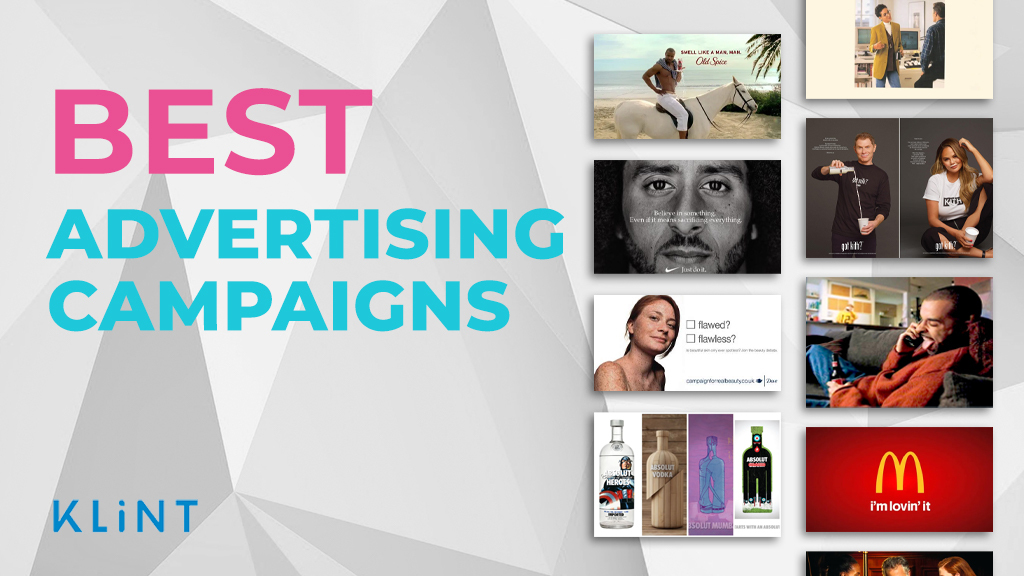
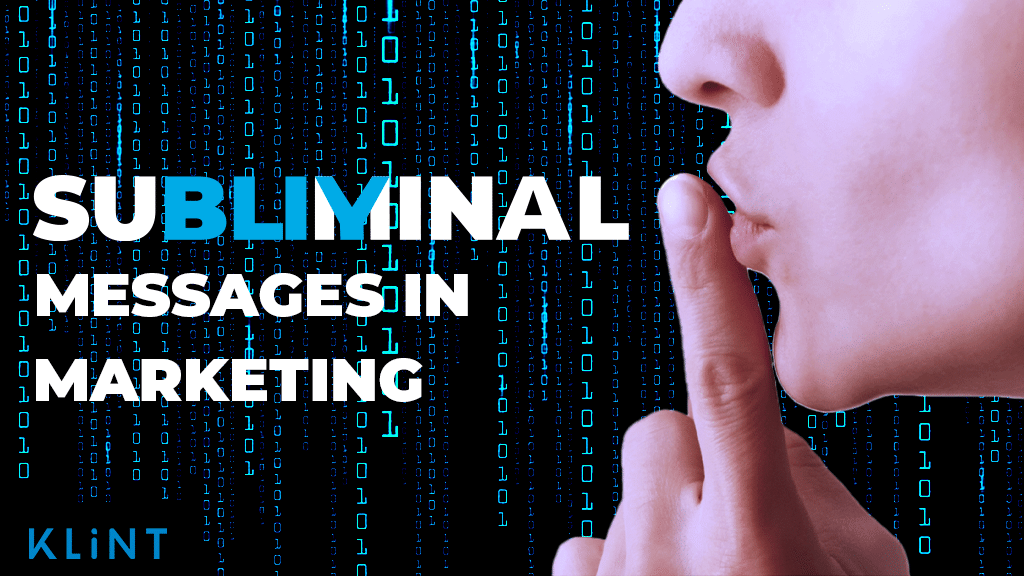
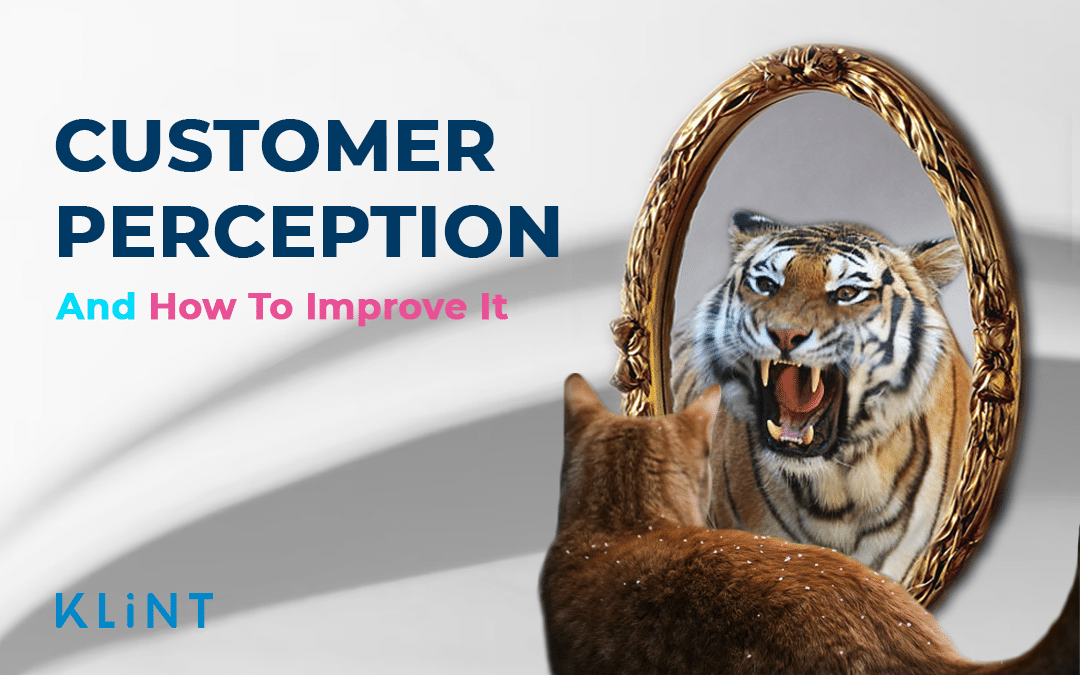
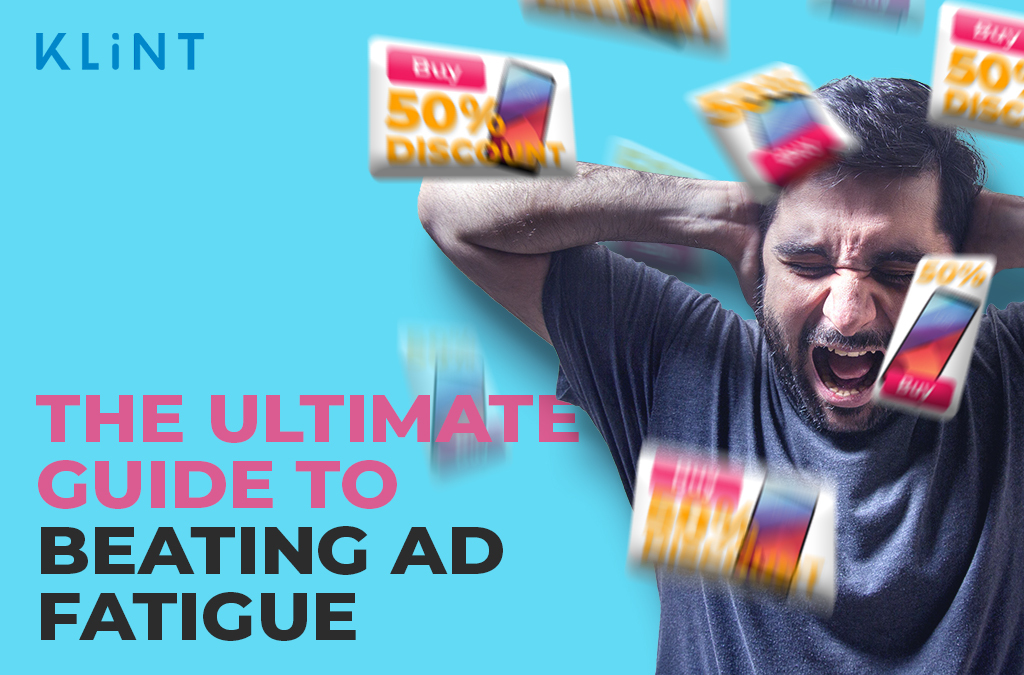
0 Comments